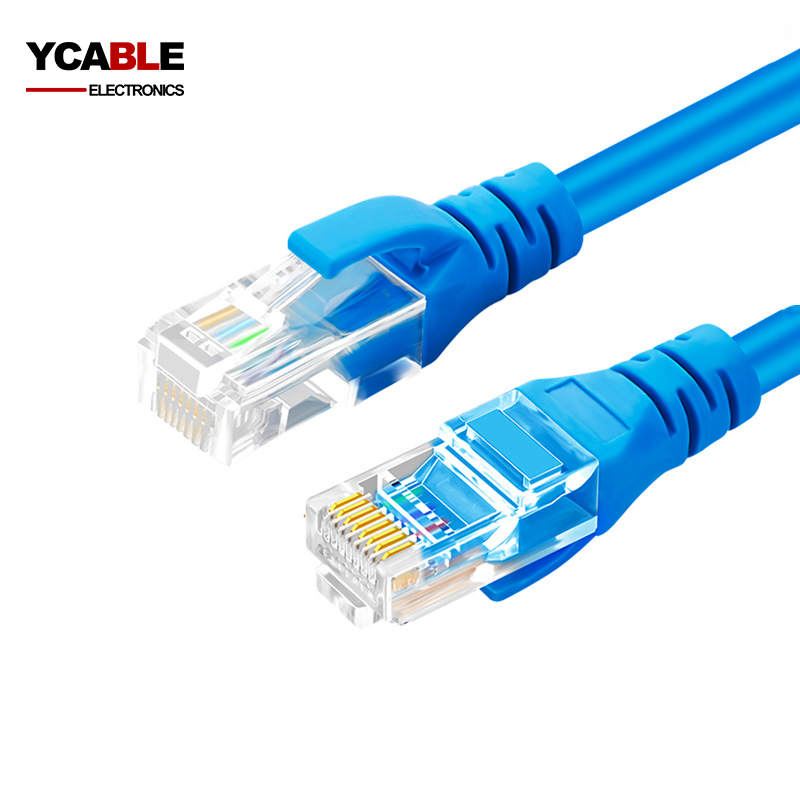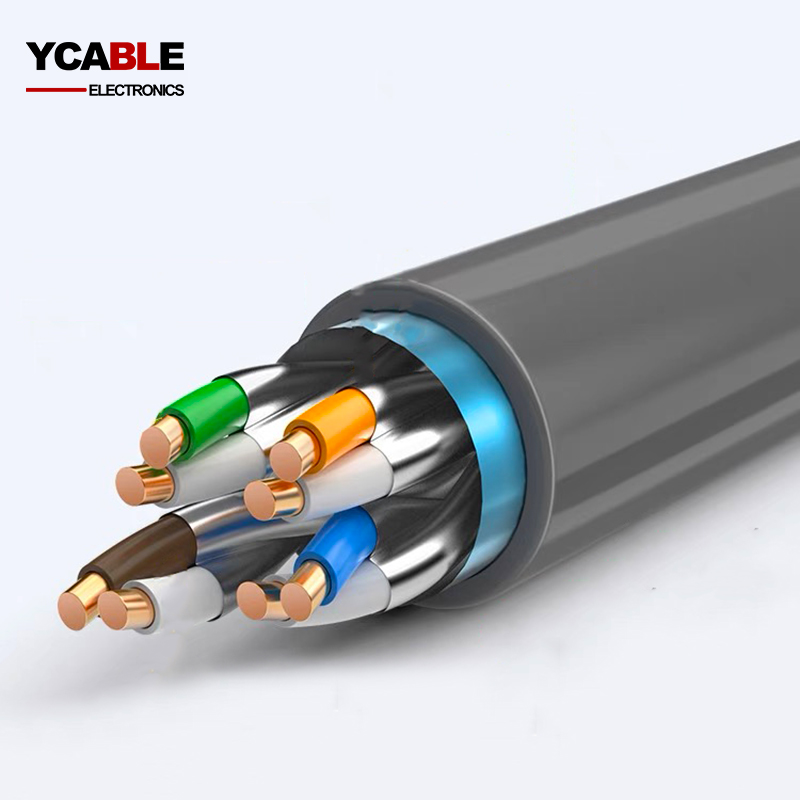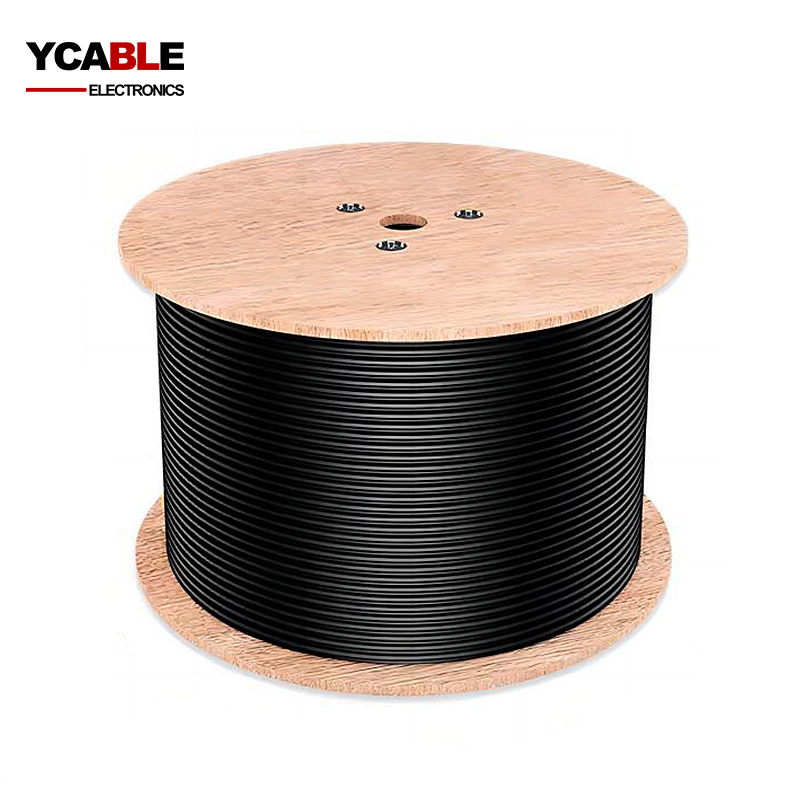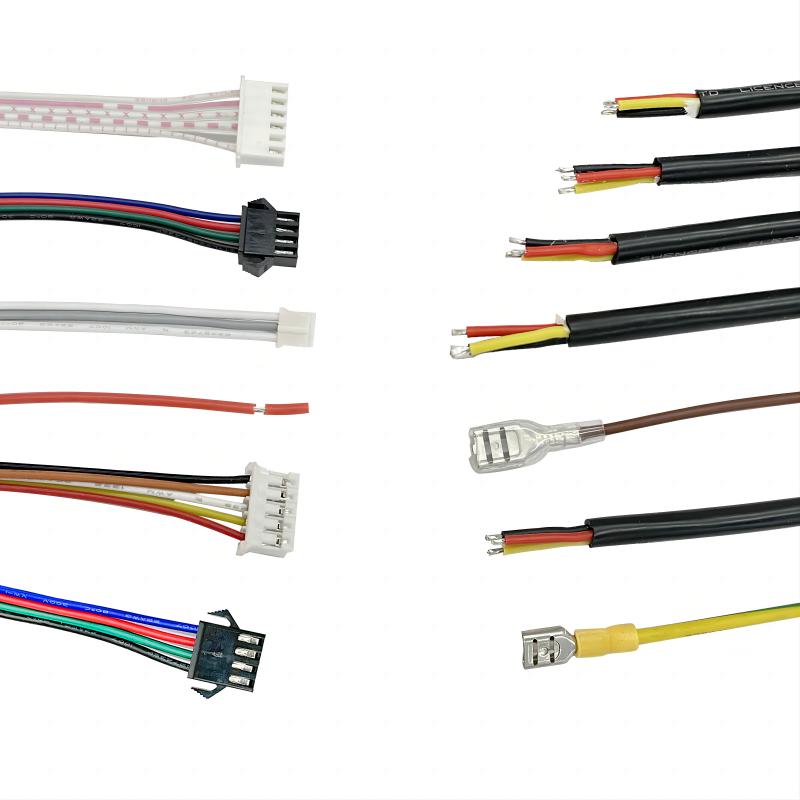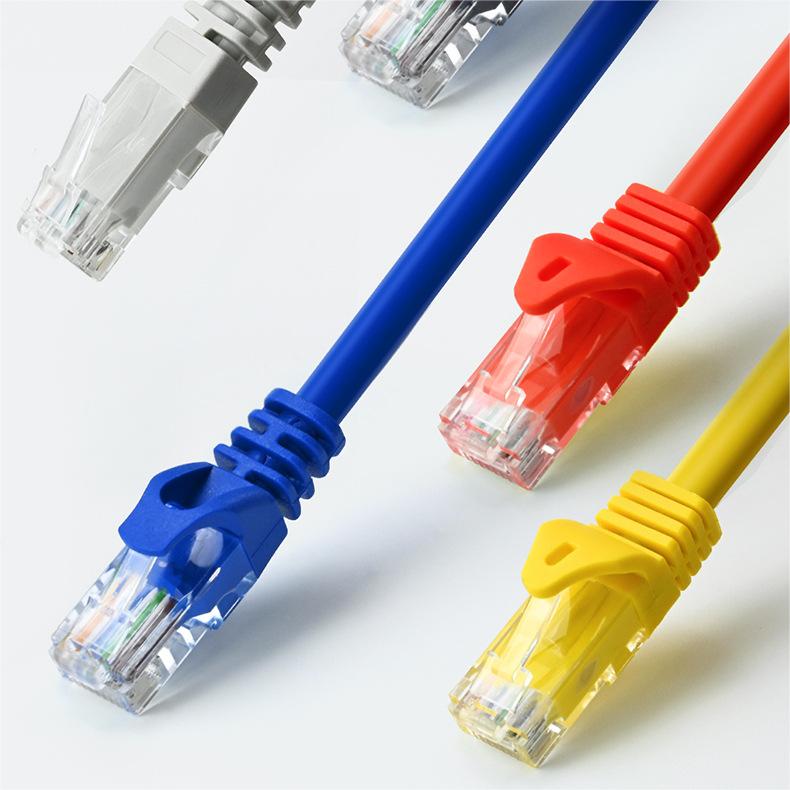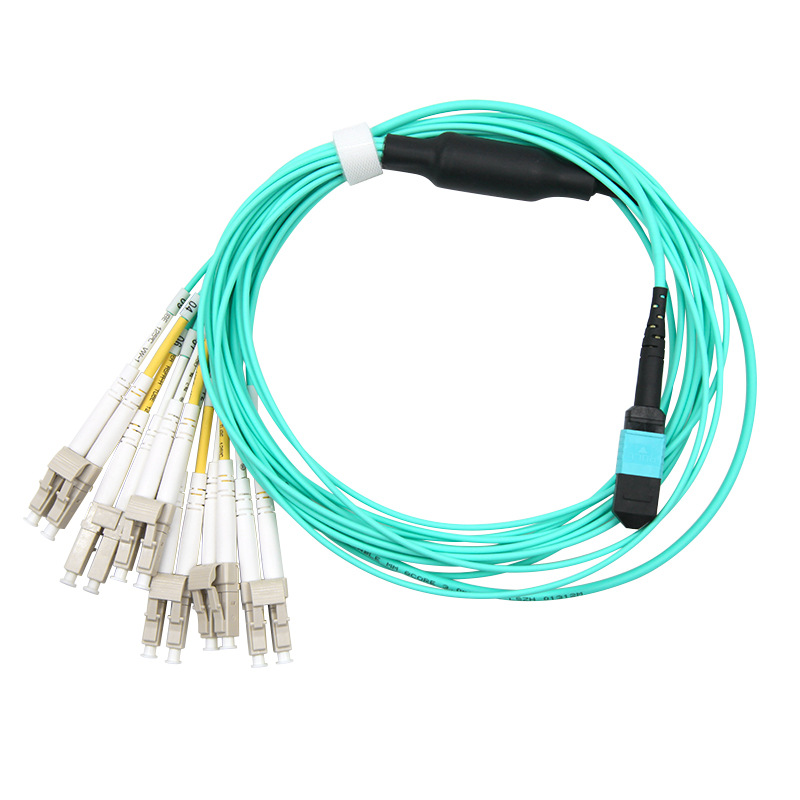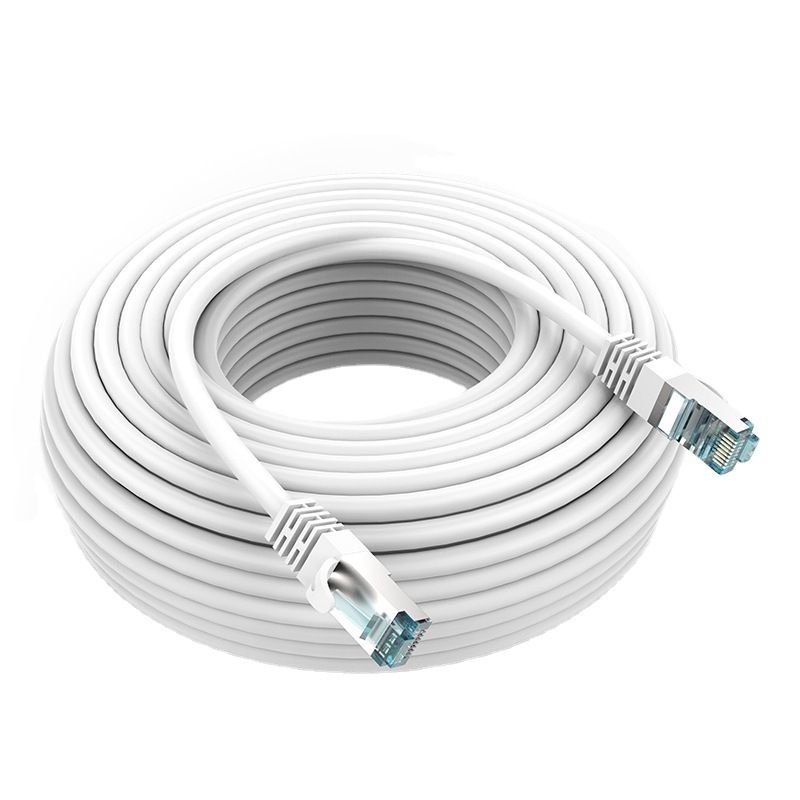CAT6A wire UTP LAN cable
CAT6A wire UTP LAN cable
Item Number:Cat6A UTP
- Model: CAT6A UTP LAN CABLE
- Size: 23AWG Solid or Stranded
- Color: White/Blue/Black/Gray/Custom
- Insulation: PE
- Shield: Unshielded
- Jacket: PVC/LSOH/Custom
- Packing: 30.5M(100FT), 305M(1000FT)/CTN/Custom
- OD: 7.5mm/Custom
- Conductor Material: Bare Copper or CCA
- Drain wire: None
Environmental Specifications:
Environmental Space – Non-plenum
Flame Test Method – CMR
Installation Temperature – 0 °C to +60 °C (+32 °F to +140 °F)
Operating Temperature – -20 °C to +60 °C (-4 °F to +140 °F)
Temperature Rating – 75 °C
General Specifications:
Cable Type
U/UTP (unshielded)
Pairs, quantity
4
Cable Component Type
Horizontal
Conductor Gauge, singles
23AWG
Conductor Type, singles
Solid/Stranded
Separator Type
Isolator
Characteristics:
- Performance up to 550 MHz, CAT6 is only 250 MHz.Suitable for 10GBASE-T, CAT6A can support up to 100 meters when transmitting 10Gbps.
- CAT6A UTP is an upgrade to CAT6 UTP,
- Enhanced protection against crosstalk and system noise.
- There are many brands sold on the market, so everyone must choose a large brand to ensure the quality of the network cable.
- Transmission rate: 1000Mbps
- Suitable for indoor applications
In general, Compared to CAT 5E and CAT 6, CAT 6A UTP provides less crosstalk, less signal loss, and a greater frequency bandwidth of 500 MHz (twice the frequency bandwidth of CAT 6 UTP). Due to its fast processing speed, it is the best choice for commercial applications.
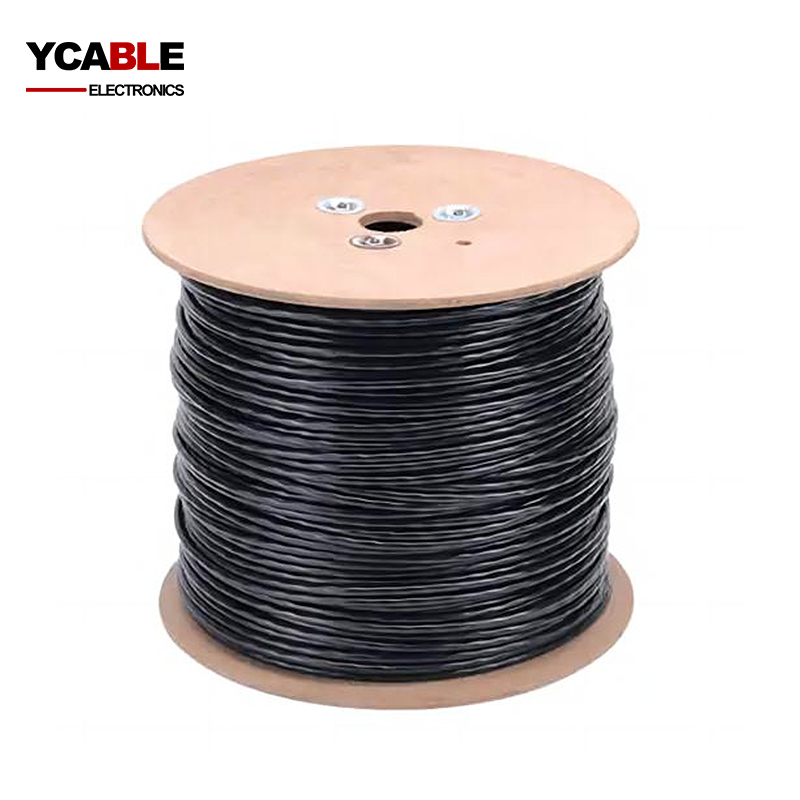

Categories
Category 6A U/UTP Cable
| Electrical Specifications | |
| ANSI/TIA Category | 6A |
| dc Resistance Unbalance, maximum | 4 % |
| dc Resistance, maximum | 7.61 ohms/100 m |
| Mutual Capacitance | 6.0 nF/100 m @ 1 kHz |
| Nominal Velocity of Propagation (NVP) | 65 % |
| Operating Frequency, maximum | 550 MHz |
| Operating Voltage, maximum | 80 V |
| Transmission Standards | ANSI/TIA-568-C.2 ISO/IEC 11801 Class EA |
| Dielectric Strength, minimum | 1500 Vac 2500 Vdc |
Description
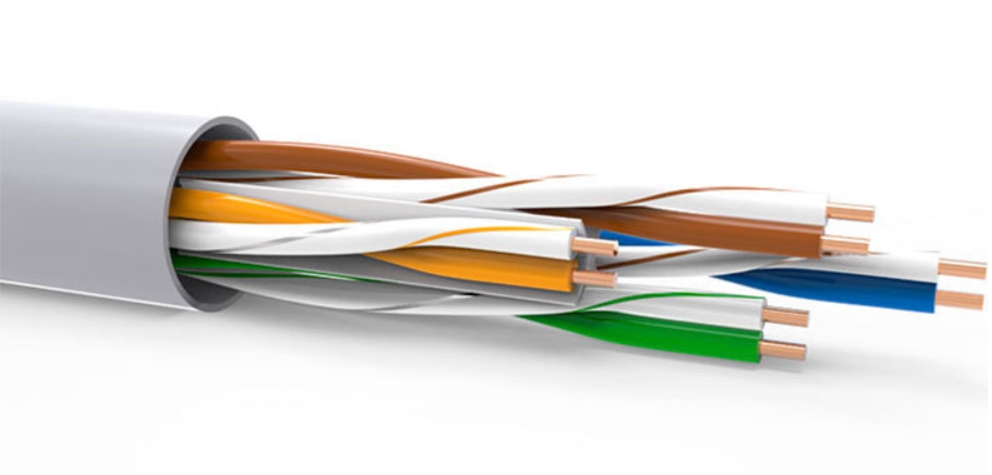
What is CAT6A UTP cable?
CAT6A UTP, as a top-tier choice for future-proofing network infrastructures and catering to 10-GbE networks, is distinct in its construction. The term 'CAT6A UTP' signifies the composition of the cable, featuring four unshielded twisted pairs, absent any external shielding.
These cat6a utp cables are designed to align with the 10GBaseT performance criteria as outlined in several industry standards: ANSI/TIA 568.2-D Category 6a, ISO/IEC 11801 Class Ea, and EN 50173-1:2011.
In every CAT6A UTP cable, there's a meticulous arrangement of four harmonized twisted pairs, made from 23 AWG insulated solid bare copper conductors. These pairs are distinctively separated by a central spline. The structure of CAT6A cables is thoughtfully engineered to foster a round, pliable form, facilitating ease in pulling and in the stripping process of the PVC jacket.
The architecture of CAT6A UTP is precisely tailored to address issues like crosstalk and ANEXT (Alien Near-End Crosstalk, a measure of signal interference between different and neighboring cables). This design includes several features: larger conductors (at least 23 AWG), more compact twists, added internal airspace, separators between pairs, and a more robust outer jacket. These elements not only improve performance but also increase the cable's diameter, generally to about .35 inches, a noticeable increase from CAT6's .25 inches. This enlargement is crucial in reducing signal interference between adjacent cable pairs. However, it's important to note that CAT6A UTP cables are still susceptible to ANEXT to some degree.
To mitigate ANEXT, standards recommend a specific installation approach for CAT6A UTP cables. Laying these cables loosely in pathways and raceways, ensuring there's spacing between them, is advised. This is a departure from the dense bundling common with CAT6/5e cables. In tight bundles, the central cable experiences the most ANEXT due to being surrounded by six other cables. Testing for ANEXT is a detailed and prolonged procedure, involving the examination of all wire-pair combinations. For a single link in a 24-cable bundle, this testing can extend up to 50 minutes.
As a cat6a utp manufacturer, YCABLE ELECTRONICS understands these nuances and intricacies, ensuring our products meet and exceed these standards and requirements.
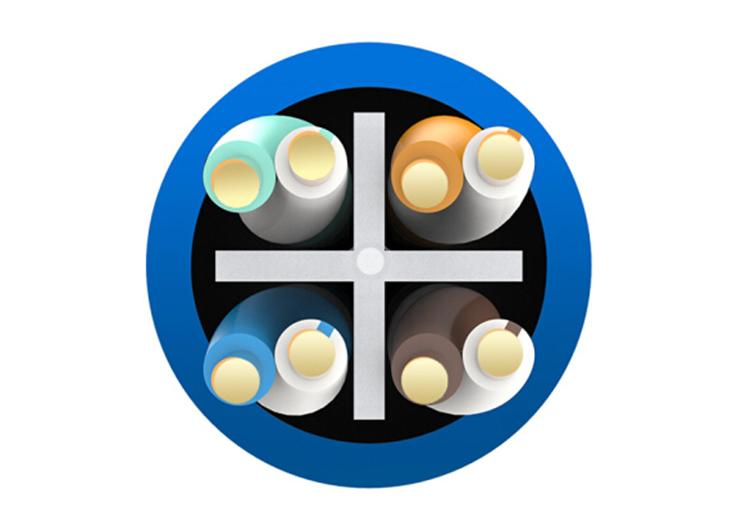
| Product Structure | |||||
| Conductor | Material | Pure copper | |||
| AWG | 23 | ||||
| Diameter(mm) | 0.575 | ||||
| Insulation | Material | Foam PE | |||
| Average Thickness(mm) | 0.23/0.32 | ||||
| Minimum Thickness(mm) | 0.2/0.28 | ||||
| Diameter(mm) | 1.05/1.25 | ||||
| pair Twist Diameter(mm) | 2.1/2.50 | ||||
| Seperator(mm) | w=4.5,h=0.5 | ||||
| Cable Diameter(mm) | 5.50 | ||||
| Rip-cord | 1*3D | ||||
| Jacket | Material | LSZH | |||
| Average Thickness(mm) | 0.62 | ||||
| Minimum Thickness(mm) | 0.58 | ||||
| Diameter 线径(mm) | 6.80 | ||||
| Color | |||||
| Insulation Wire | Blue*White/Blue | Orange*White/Orange | |||
| Green*White/Green | Brown*White/Brown | ||||
| Jacket | According to the customer's requirement | ||||
CAT6A Electrical Characteristic
| Electrical Characteristic | ||||||
| Impedance Ω | Propagation Delay Skew ns/100m | Capacitance Unbalance | Conductor Resistance@20℃ Ω/km | Unbalance Resistance % | ||
| 100±15 | <=45 | <=330 | <=9.5 | <=5 | ||
| Frequency MHZ | Return Loss >=dB | Attenuation <=dB/100m | Next >=dB/100m | PS Next >=dB/100m | Elfext >=dB/100m | PS Elfext >=dB/100m |
| 1 | 20.00 | 2.08 | 78.00 | 75.0 | 78.0 | 75.0 |
| 4 | 23.01 | 3.75 | 78.00 | 75.0 | 78.0 | 75.0 |
| 8 | 24.52 | 5.22 | 78.00 | 75.0 | 77.2 | 74.2 |
| 10 | 25.00 | 5.82 | 78.00 | 75.0 | 75.3 | 72.3 |
| 16 | 25.00 | 7.34 | 78.00 | 75.0 | 71.2 | 68.2 |
| 20 | 25.00 | 8.21 | 78.00 | 75.0 | 69.3 | 66.3 |
| 25 | 24.32 | 9.18 | 78.00 | 75.0 | 67.3 | 64.3 |
| 31.25 | 23.64 | 10.26 | 78.00 | 75.0 | 65.4 | 62.4 |
| 50 | 22.21 | 13.01 | 78.00 | 75.0 | 61.3 | 58.3 |
| 62.5 | 21.54 | 14.57 | 78.00 | 75.0 | 59.4 | 56.4 |
| 100 | 20.11 | 15.82 | 75.40 | 72.40 | 55.3 | 52.3 |
| 125 | 19.43 | 20.77 | 73.90 | 71.0 | 53.4 | 50.4 |
| 200 | 18.00 | 26.47 | 70.90 | 67.9 | 49.3 | 46.3 |
| 250 | 17.32 | 29.73 | 69.40 | 66.4 | 47.3 | 44.3 |
| 300 | 17.32 | 32.69 | 68.20 | 65.2 | 45.8 | 42.8 |
| 350 | 17.32 | 35.44 | 67.20 | 64.2 | 44.4 | 41.4 |
| 400 | 17.32 | 38.01 | 66.40 | 63.4 | 43.3 | 40.3 |
| 500 | 17.32 | 42.76 | 64.90 | 61.9 | 41.3 | 38.3 |
CAT6A Mechanical Characteristic
| Mechanical Characteristic | Product Standard | ||||||
| Testing Object | Jacket Material | Rated Temperature(℃) | 90 | ||||
| Testing Material | LSZH | YD/T1019-2001 | Meet | ||||
| Aging Condition(℃*hrs) | 100*168 | UL/C(UL)/ETL | |||||
| Before Aging | Tensile Strength(Mpa) | >=10 | ANSI/EIA568C.2 | ||||
| Elongation(%) | >=125 | ISO/IEC 11801 | |||||
| After Aging | Tensile Strength(Mpa) | >=85% of unaged | Packaging | 305M/Box/Reel | |||
| Elongation(%) | >=50% of unaged | Printing | According to customer's requirement | ||||
| Cold Bending(-20±2℃*4hrs) | No crack | ||||||
What is the difference between Cat6 and CAT6A UTP cable?
When deliberating over "Is Cat6A cable superior to Cat6?", focusing purely on performance metrics, Cat6A UTP does hold an edge. However, proclaiming cat6a utp cable as the universally preferable choice oversimplifies the situation. Various factors influence the Cat6 versus Cat6A debate, and it's seldom a case of 'one-size-fits-all'. Let's explore these divergences in detail.
Key Divergences Between Cat6 and CAT6A UTP Cables:
- Technical Requirements: The choice often hinges on the existing or intended network equipment's capabilities. Most network devices handle speeds from 10 Mbps to 1 Gbps. Assess if your setup demands or supports speeds up to 10 Gbps. If so, CAT6A UTP is your go-to. Otherwise, the additional expense of CAT6A UTP may not yield proportional benefits.
- Cost and Installation Intricacies: Installing cat6a utp cable isn't just about the cable's cost. It encompasses a broader spectrum of expenses, including higher-spec switches and network hardware. This cable, being bulkier and less flexible than Cat6, also demands meticulous installation, often necessitating professional assistance.
- Futureproofing Considerations: Opting for CAT6A UTP is prudent if you foresee a shift to 10 Gbps speeds, particularly for extended cable runs up to 328 feet. Moreover, if future cable upgrades seem financially or logistically daunting, CAT6A UTP emerges as a wise investment.
Comparative Breakdown of Cat6 vs. Cat6A UTP: Similarities:
- Both support speeds up to 1 Gbps over 328 feet.
- Constructed with eight copper conductors, twisted into four pairs.
- Comply with TIA 568A/B color coding.
- Available with varying jacket types for diverse installation needs.
- Feature an internal spline for pair separation.
- Offered in both shielded and unshielded variations.
Differences:
- CAT6A UTP cables are crafted with tighter tolerances, requiring high-spec connectors and patch panels.
- CAT6A UTP's bandwidth extends to 500 MHz, supporting 10 Gbps over 328 feet, while Cat6 peaks at 250 MHz and 10 Gbps only up to 165 feet under optimal conditions.
- CAT6A UTP typically employs thicker conductors and jackets, complicating installation and elevating costs.
As a cat6a utp manufacturer, YCABLE ELECTRONICS specializes in crafting cables that not only adhere to these specifications but also address the nuanced requirements of diverse networking environments. Our expertise ensures that each CAT6A UTP cable we produce is a blend of technical excellence and practical utility, tailored to the evolving needs of modern networks.
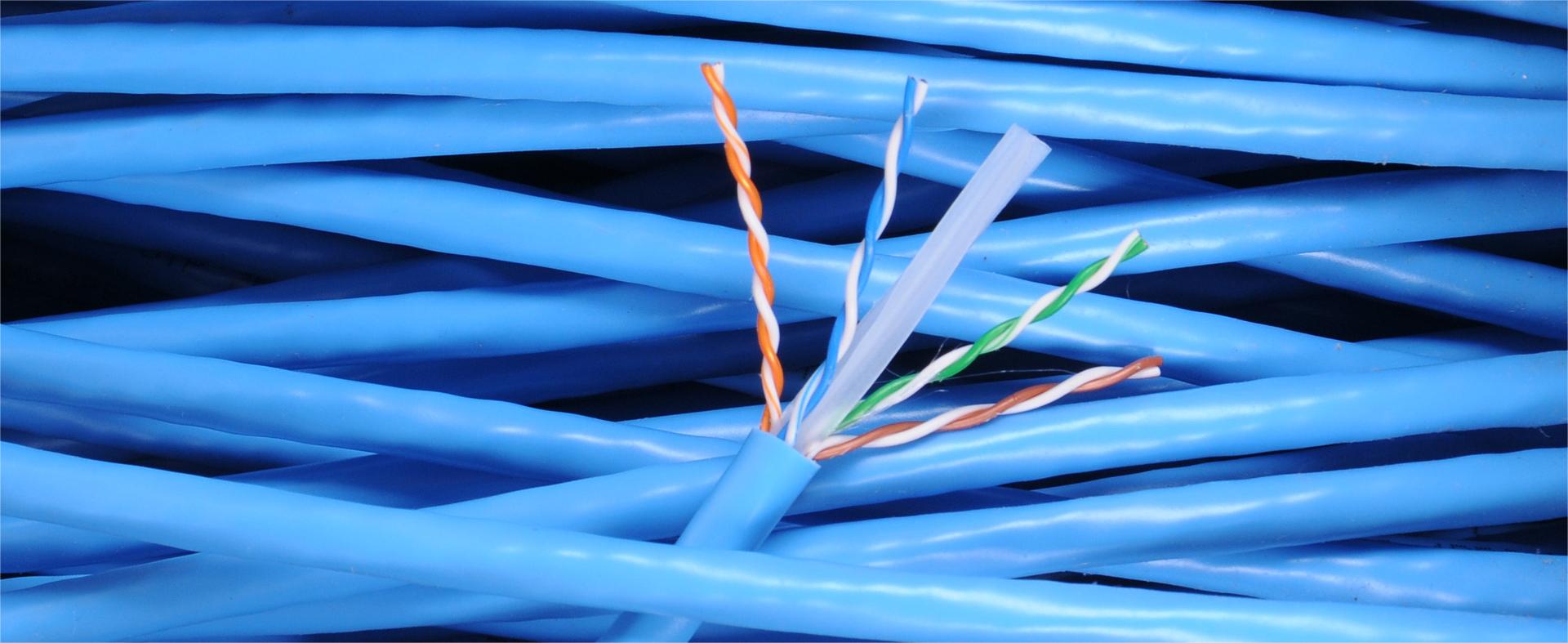
Cat6 vs Cat6a: Which one should I use?
Selecting between Cat6 and CAT6A UTP for Ethernet cabling involves weighing various elements. Considerations like budget, current and future application needs, and the necessity for high-speed networking are crucial.
Presently, Cat6 cables suffice for standard home network usage. They efficiently support activities like HD movie streaming and online gaming, along with handling 60W and 90W PoE (Power over Ethernet). However, if you anticipate a future requirement for 10Gbps speeds, CAT6A UTP becomes a more suitable choice.
CAT6A UTP is particularly advantageous for expansive networks demanding substantial data throughput. It's often the preferred option for new constructions, office networks, and data centers, thanks to its capacity for 10Gbps speeds over distances up to 100 meters. Another benefit of CAT6A UTP is its backward compatibility with Cat6, Cat5e, and Cat5, making it a viable solution for future network upgrades.
Understanding the distinctions between Cat6 and CAT6A UTP can guide you in making an informed decision regarding your Ethernet cabling needs. For more insights into these differences and related products, feel free to reach out to our team. As a cat6a utp manufacturer, YCABLE ELECTRONICS is dedicated to providing expert advice and high-quality cat6a utp cable solutions tailored to your specific networking requirements.
Factors to Consider for Optimal CAT6A Cable Selection
Understanding the nuances between various CAT6A UTP cable types like UTP, F/UTP, and SFTP is just the beginning. Several additional aspects of CAT6A cables play a pivotal role in their performance. Here's a breakdown of critical factors to consider for selecting the right CAT6A cable.
- Cable Dimensions and Mass CAT6A cables operate at frequencies up to 500 MHz, double that of Cat6. To manage noise and crosstalk at these elevated frequencies, CAT6A cables are typically up to 50% larger than Cat6 cables. This increased size impacts the number of cables that can be accommodated in a tray or conduit, a crucial factor in retrofit installations. While many CAT6A variants are notably larger and heavier, some recent innovations in CAT6A cables have reduced this difference to about 15%.
- Bending Flexibility The larger diameter of CAT6A cables results in a greater bend radius. This factor is crucial when maneuvering cables in confined spaces like wall cavities. A smaller bend radius simplifies cable routing and installation, particularly in tight spaces and for optimizing airflow in racks.
- Installation Considerations Most CAT6A Ethernet cables are bulkier due to additional and thicker materials, like more twists in the copper pairs, larger splines, and heftier outer jackets. These characteristics make CAT6A cables more time-consuming to prepare and terminate compared to thinner cables.
- Electromagnetic Interference (EMI) Shielding While shielded cables are often perceived to offer better noise immunity, the effectiveness largely depends on the quality of shield termination, twisted pair balance, and the local and remote ground connections. Effective cable designs provide an electromagnetic barrier akin to a Faraday cage, mitigating the drawbacks of grounding.
- Network Infrastructure Compatibility Selecting the appropriate cable also entails considering the overarching network infrastructure, such as building ownership and the primary usage of your 10G network. Potential infrastructural changes should also be factored in.
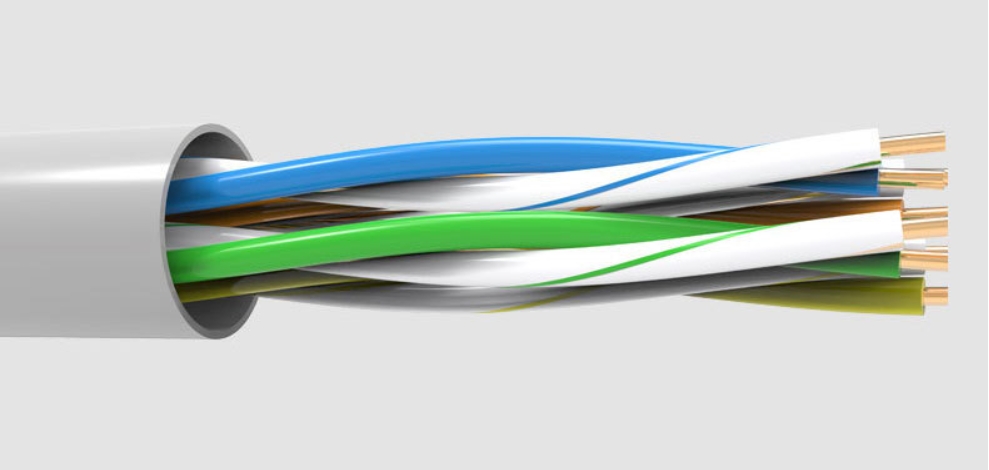
Other Questions for CAT6A.
What are the advantages of CAT6A UTP cable?
- CAT6A UTP (Unshielded Twisted Pair) cable, a specialized Ethernet cable, is designed for high-speed data transmission up to 10 Gbps. This cat6a utp cable is noted for its exceptional bandwidth and elevated performance, ideal for intensive-use settings such as data centers and fast-paced networks.
What types of applications are suitable for a 1000ft CAT6A cable?
- Appropriate Applications for a 1000ft CAT6A Cable A 1000ft CAT6A cable, spanning an impressive 1000 feet, is optimally designed for large-scale network infrastructures. This makes it an excellent selection for substantial installations in environments like expansive commercial buildings, data centers, and industrial zones, where the need for long cable runs is prevalent.
What are the benefits of using CAT6A 23AWG cable with 23AWG conductors?
- The CAT6A 23AWG cable, a specialized variant in the CAT6A series, is equipped with 23 American Wire Gauge (AWG) copper conductors. The 23AWG rating signifies the conductor's diameter. With its potent 23AWG conductors, this cat6a utp cable boosts electrical conductivity and diminishes resistance, thereby enhancing signal quality and overall functioning, especially in scenarios involving lengthy cable runs. YCABLE ELECTRONICS, as a proficient cat6a utp manufacturer, prides itself on fabricating cables that adhere to these stringent criteria, delivering both effectiveness and dependability in network setups.
Related Products
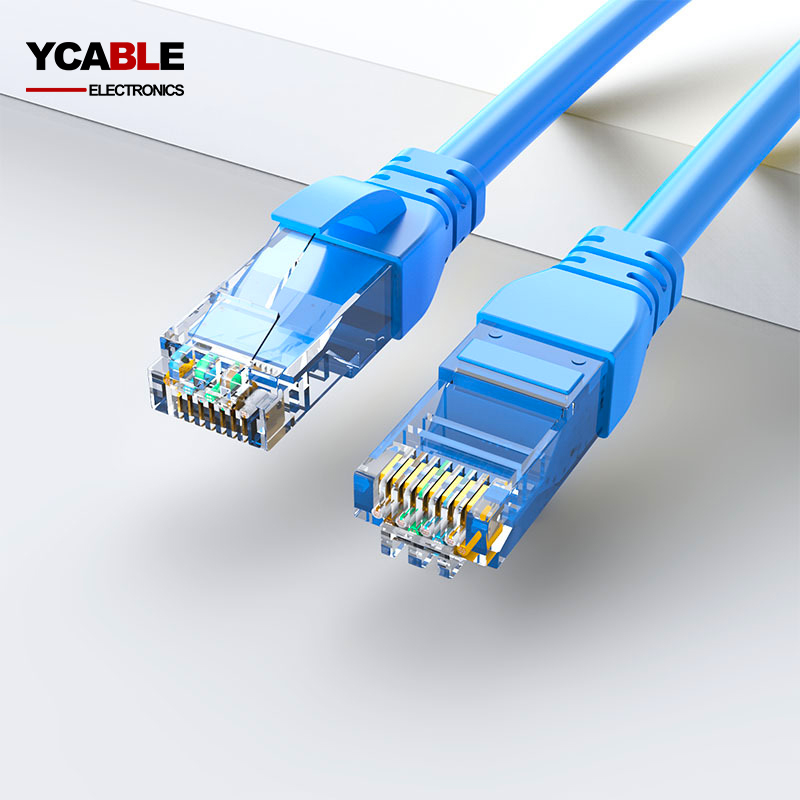
Cat 6 Ethernet Patch Cable
A Cat6 patch cable, alternatively referred to as a Cat6 Ethernet cable, ...
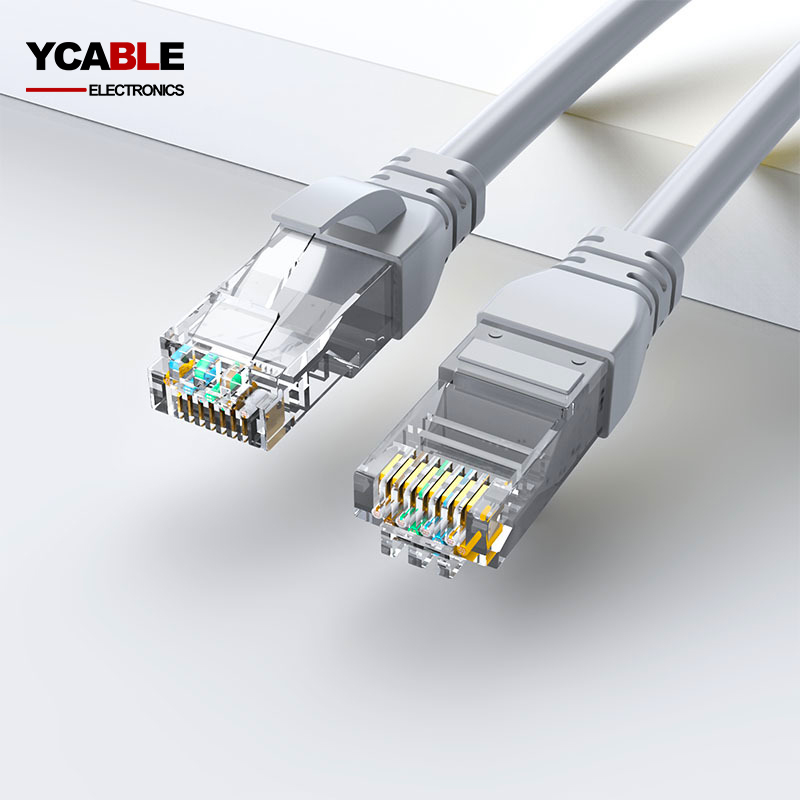
Cat 6 FTP Ethernet Patch Cord
CAT6/CAT6A Ethernet FTP Patch Cable, Non-Booted Crimped/Assembly Style: YCABLE ELECTRONICS's Cat6 FTP ...
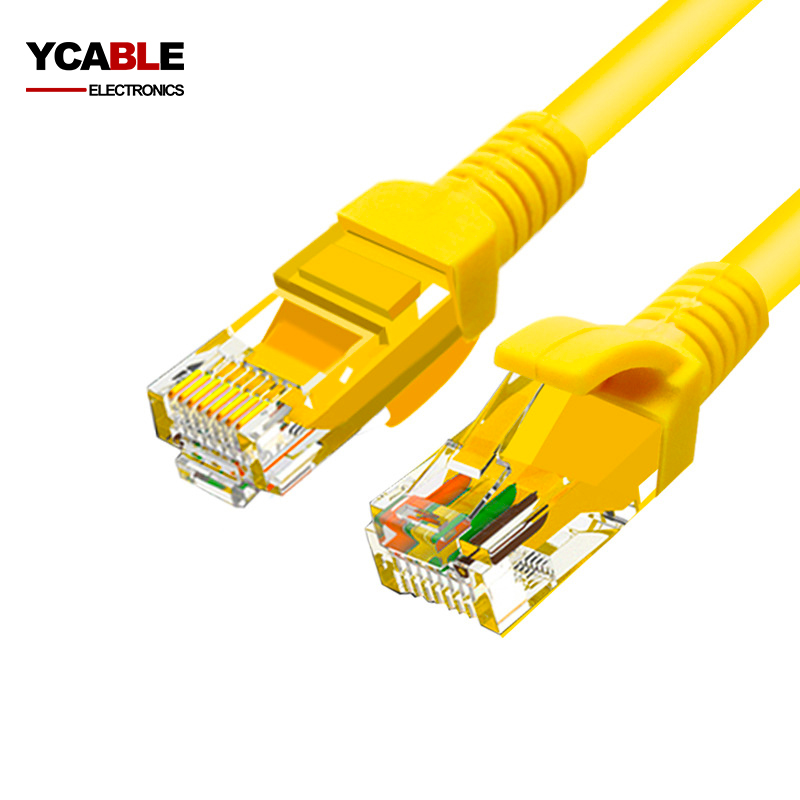
Cat 5E FTP Ethernet Patch Cable
Cat5e Shielded (FTP) Ethernet Network Patch Cable, 26AWG, 1000Base-T This Cat5e FTP ...
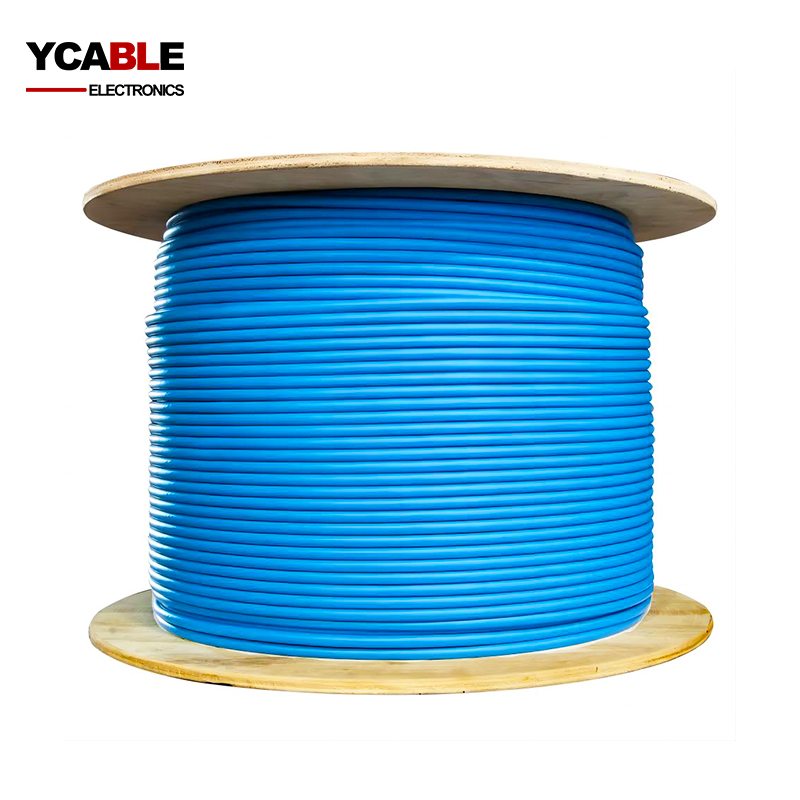
CAT6A wire FTP LAN cable
Custom 1000FT CAT6A FTP Cable CAT6E F/UTP shielded ethernet shielding network OFC ...
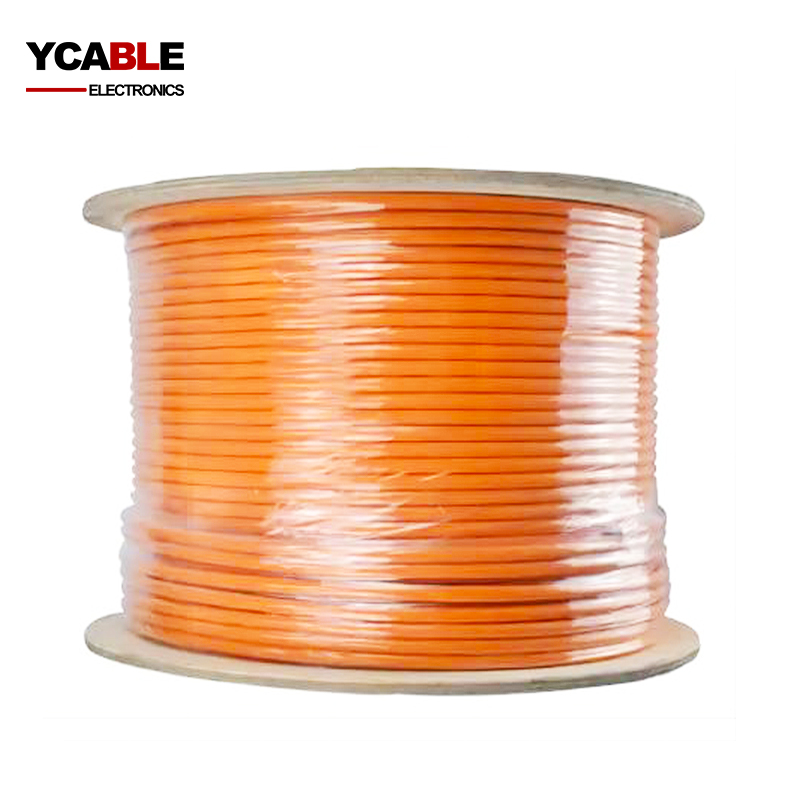
CAT6A wire FFTP LAN cable
1000FT CAT6A FFTP shielded ethernet copper network cable manufacturer in China

